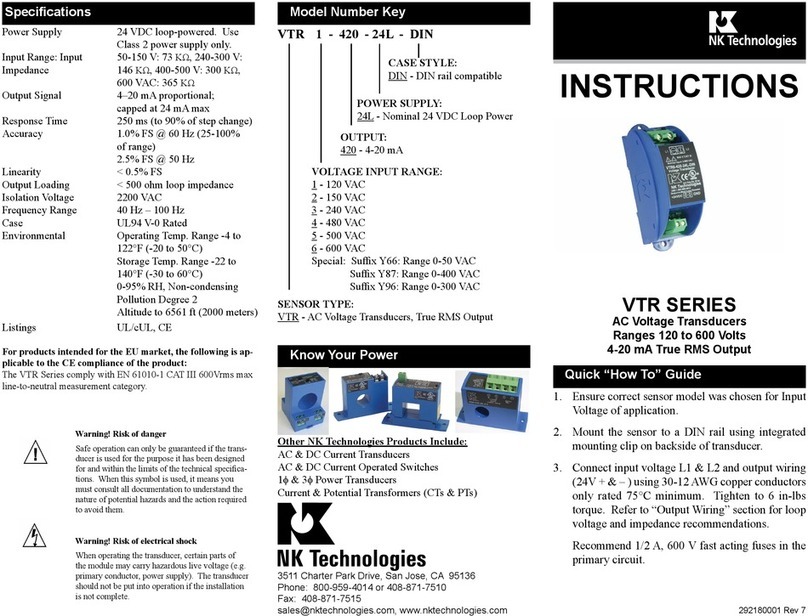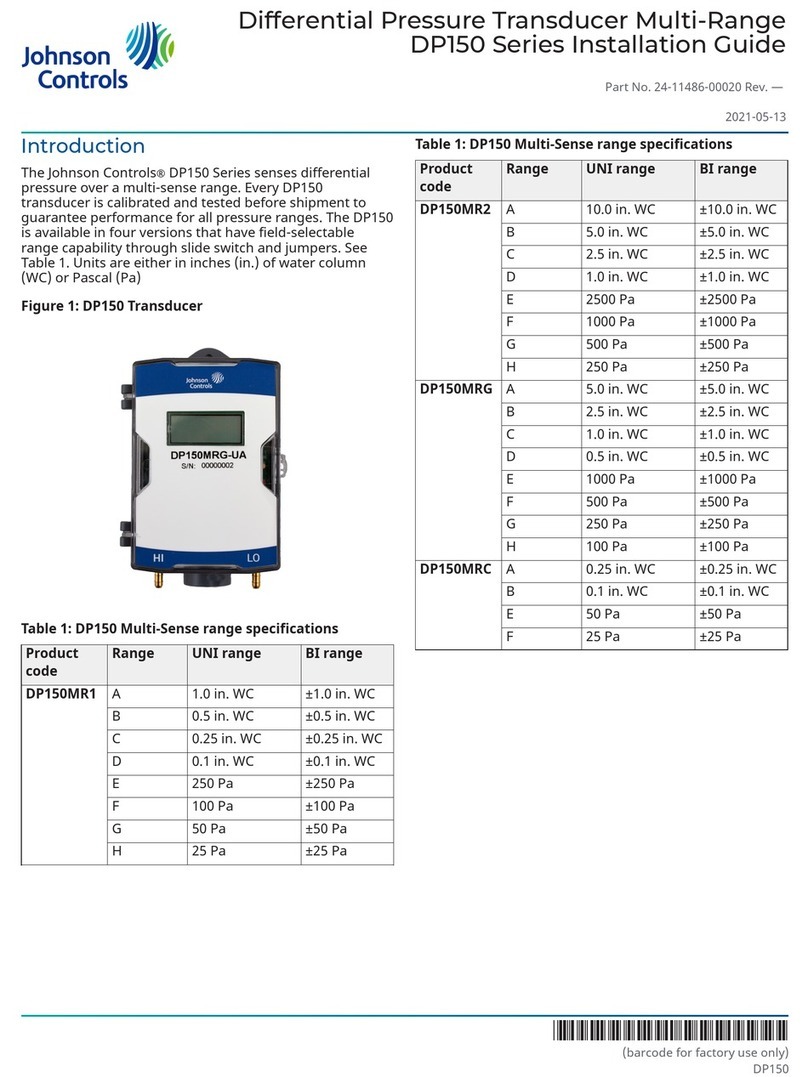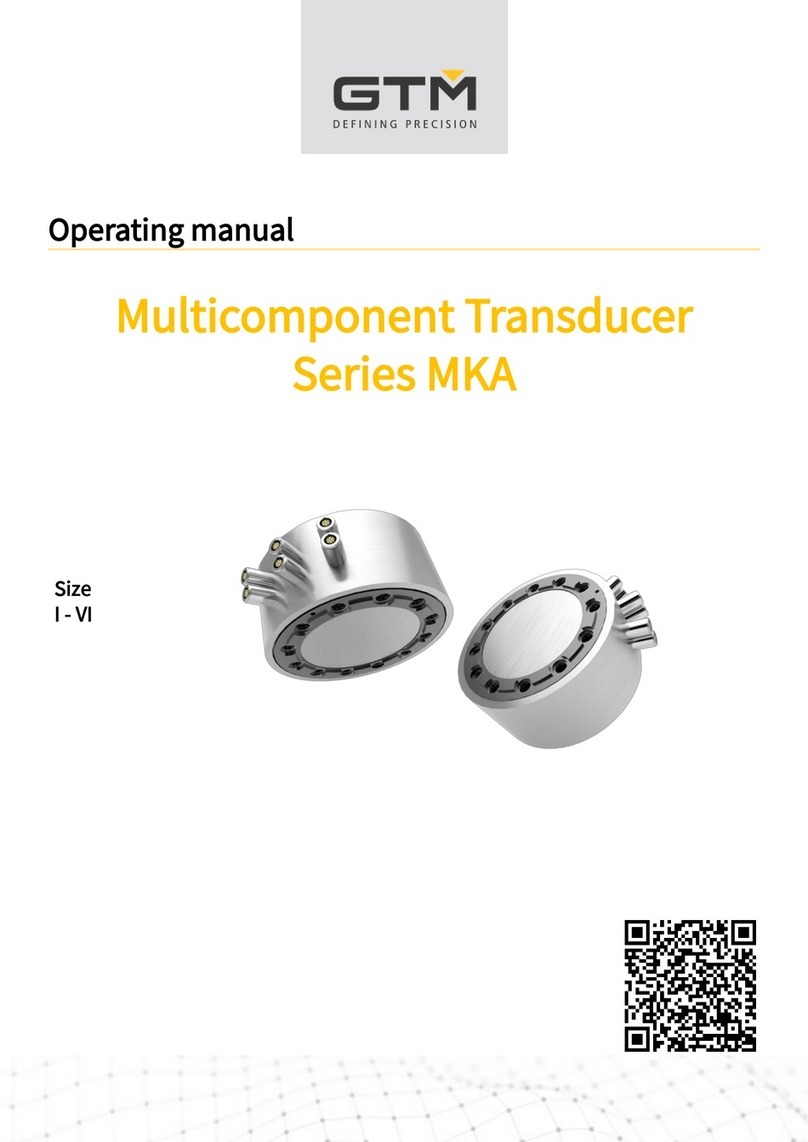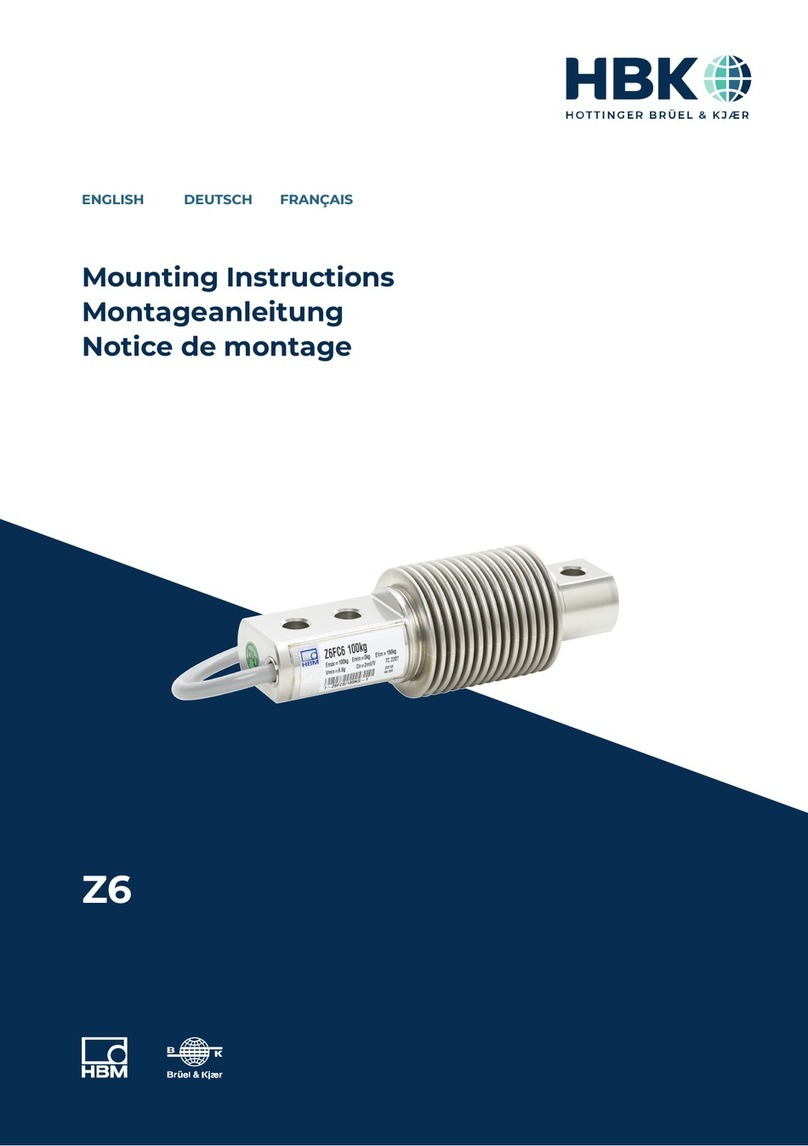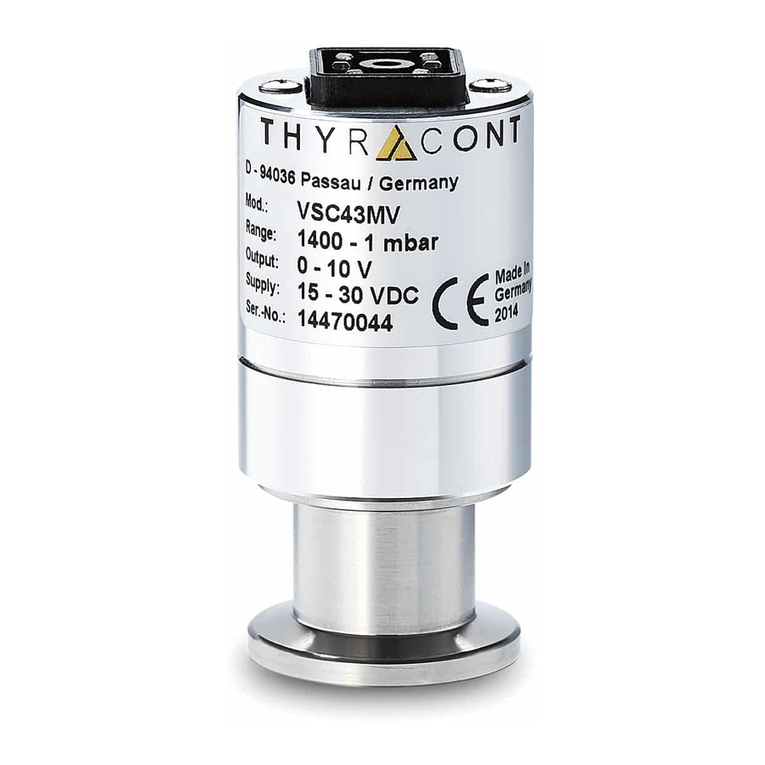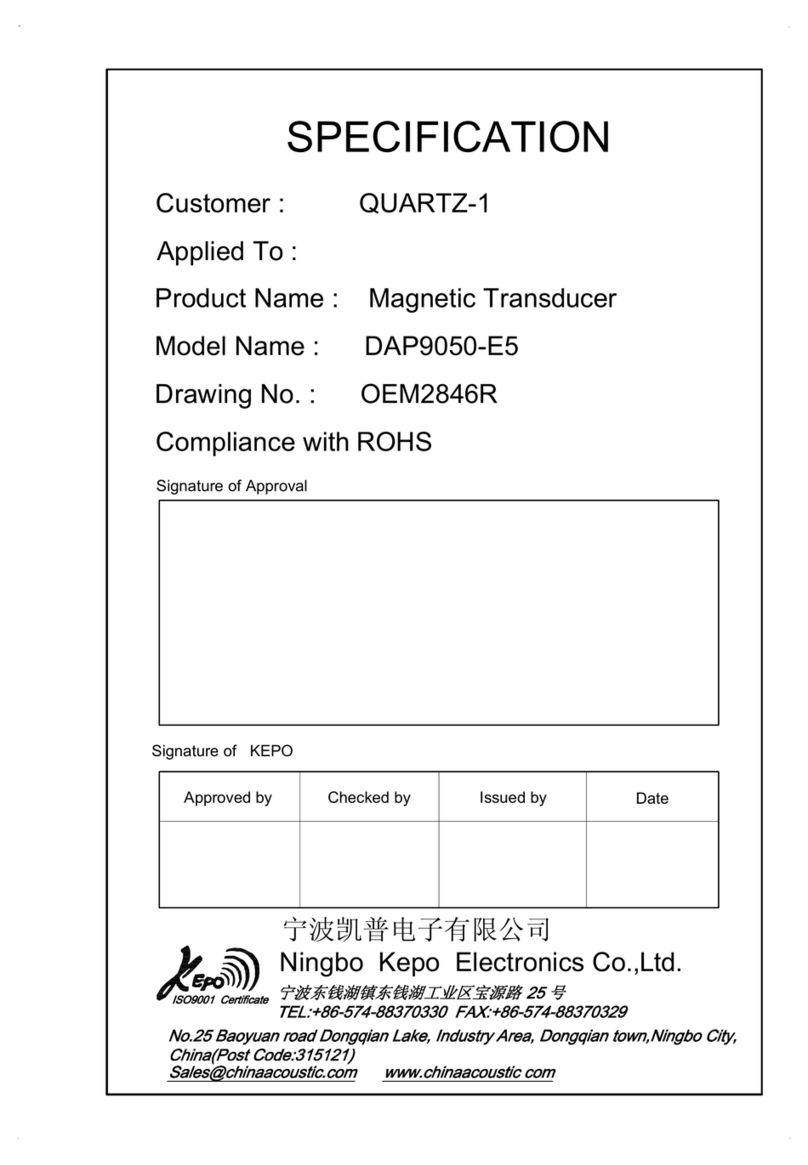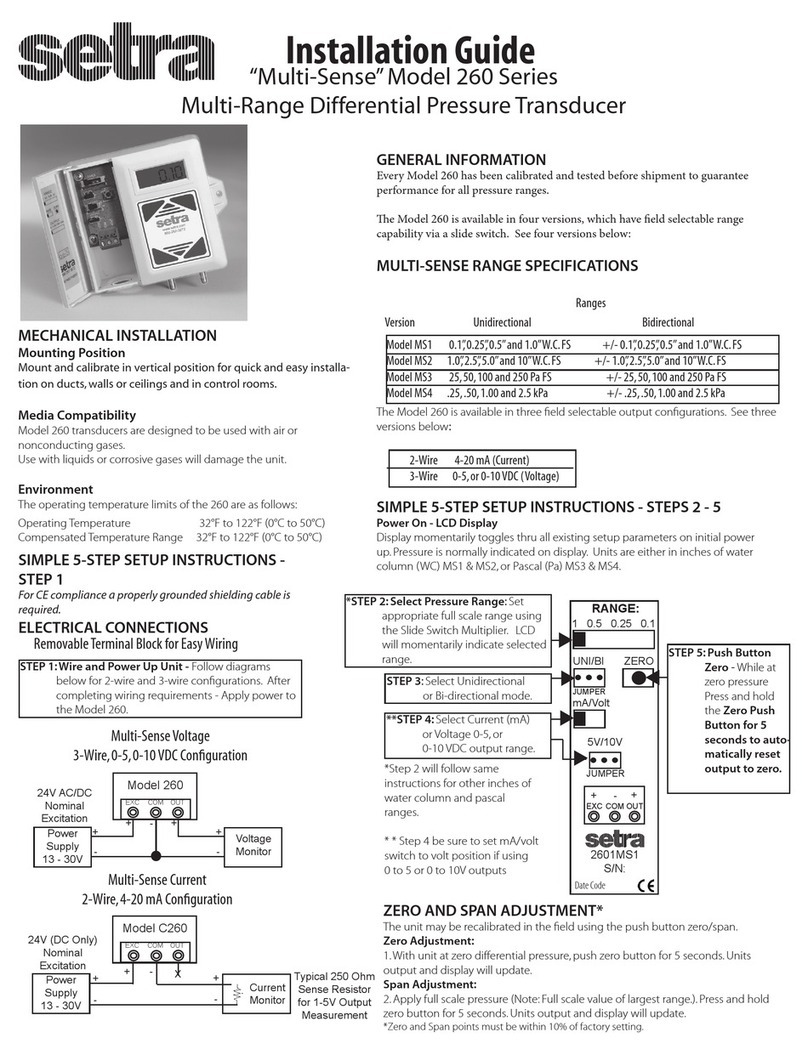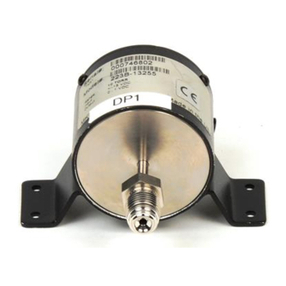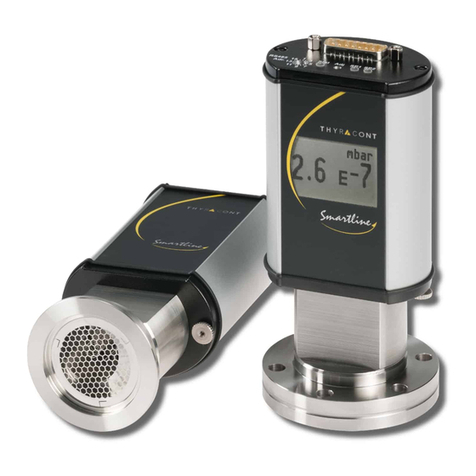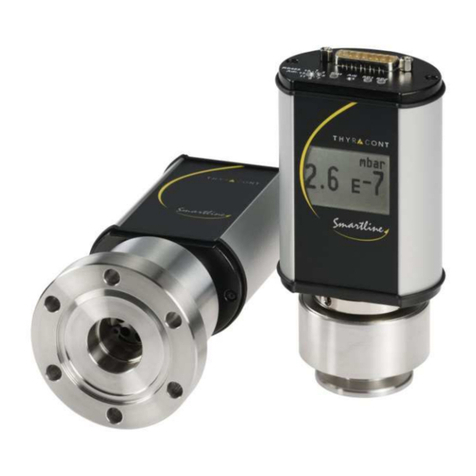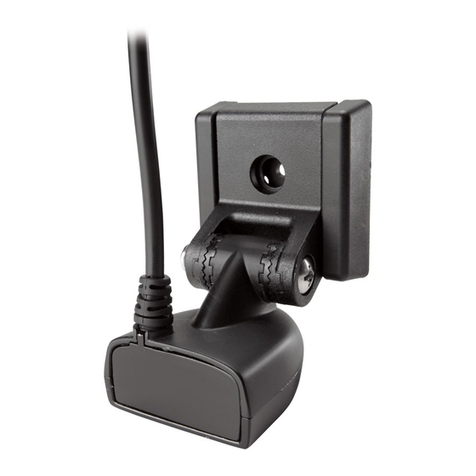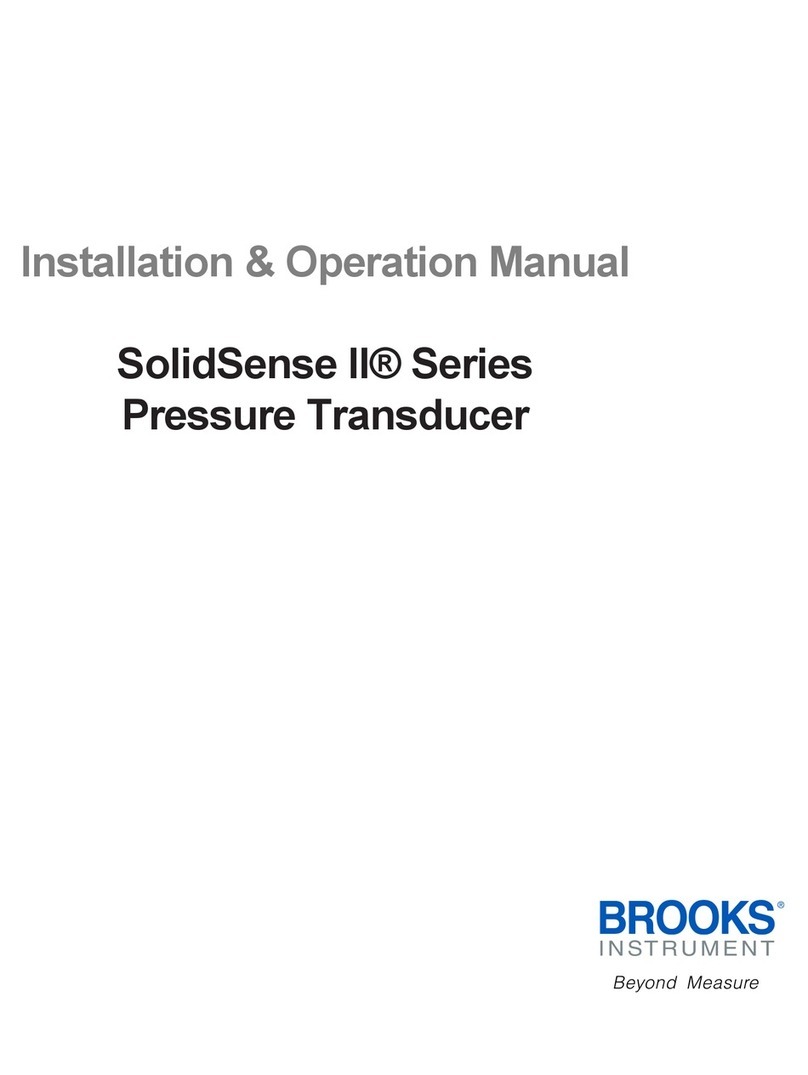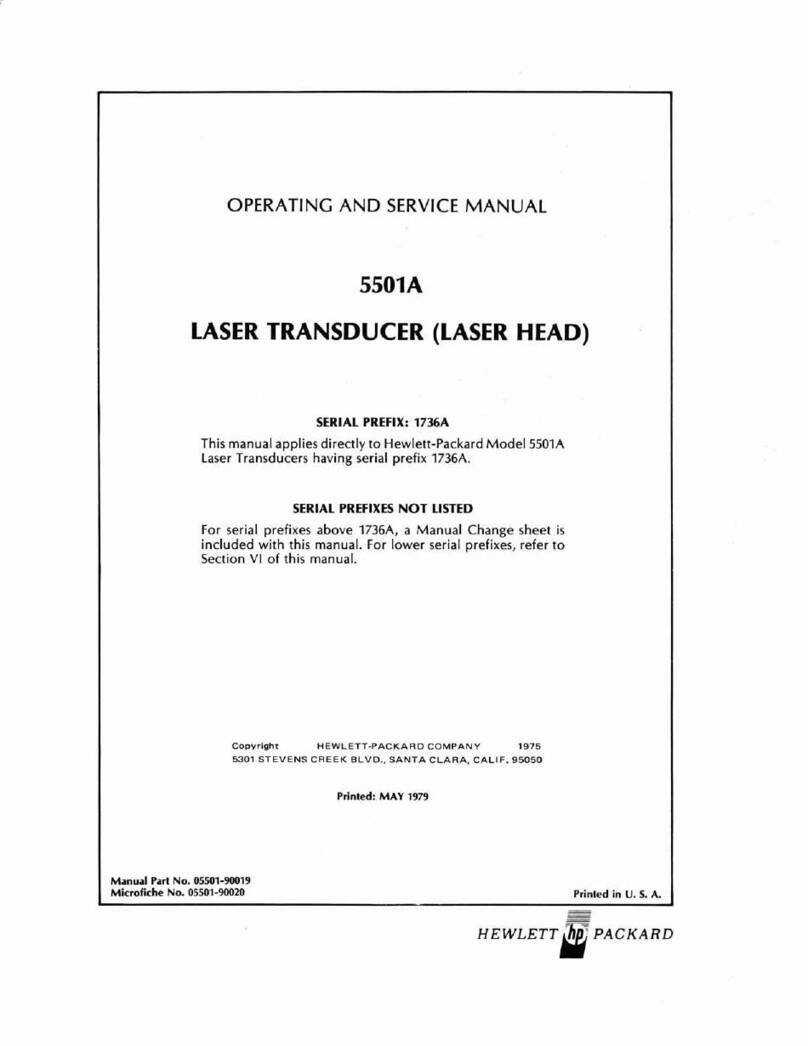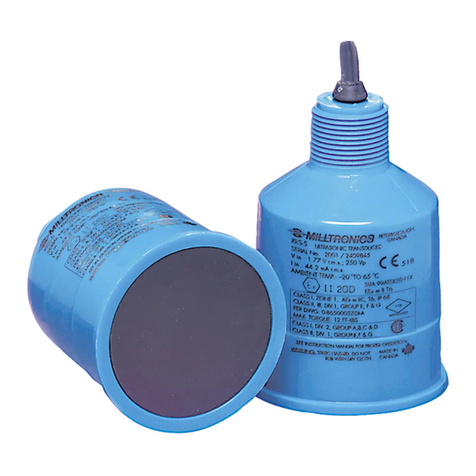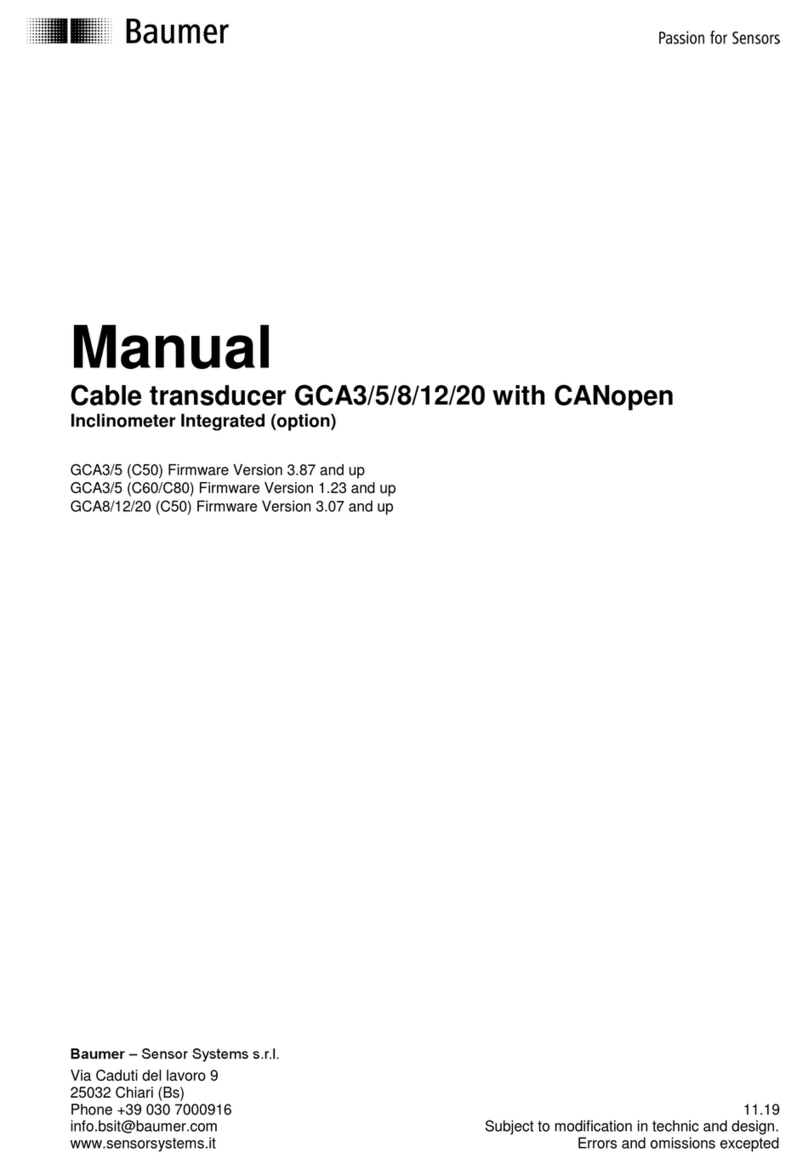Greystone Energy Systems LP-S User manual

Page 1
INTRODUCTION
The Low Pressure Transducer can be used to measure positive,
negative or dierential pressure in the ranges of 1”wc to 20”wc.
The highly accurate piezoresistive sensor is ideal for monitoring
pressure of non-corrosive, non-ionic working uids such as clean
dry air or other inert gases. It features eld selectable pressure
ranges and output signal types for the most exible application.
Typical HVAC applications include monitoring of lter dierential
pressure or clean room pressure. The output signal is factory
calibrated and temperature compensated for highest startup
accuracy and trouble-free operation.
BEFORE INSTALLATION
Read these installation instructions carefully before
commissioning the Pressure Transducer. Failure to follow these
instructions may result in product damage. Do not use in an
explosive or hazardous environment, with combustible or
ammable gases, as safety or emergency stop devices or in
any other application where failure of the product could result
in personal injury. Use electrostatic discharge precautions during installation and do not exceed the
device ratings.
MOUNTING
The transducer mounts on a vertical surface using the two integrated mounting holes. Ensure there is
enough space around the unit to connect the pressure tubing without kinking and to make the electrical
connections, avoid locations with severe vibrations or excessive moisture. Drill a hole in the duct and
insert so the probe point is facing into the air ow. The enclosure has a standard opening for a 1/2”
conduit and may be installed with either conduit and a conduit coupler or a cable gland type tting. See
Figure 1.
The two mounting holes will facilitate a #10 size screw (not supplied). See Figure 1.
The enclosure has a hinged cover with a latch. Open the
cover by pulling slightly on the latch on the right side of
the enclosure and at the same time pulling on the cover, as
illustrated in Figure 2.
A 1/2" NPT threaded connection hole is provided on the
bottom side of the enclosure. Screw the EMT connector
or cable gland connector in until tight. See Figure 3. It is
recommended that weatherproof conduit or cable gland
ttings be used. The F style enclosure includes 1/2" NPT to M16
thread adapter and cable gland tting. See Figure 3.
Two security screws are provided which can be installed to
help secure the cover once settings and wiring connections are
complete. See Figure 4.
Figure 1
Figure 2
Figure 3 Figure 4
EMT Connector
Thread adapter and
cable gland tting
IN-GE-LPXXXS-02 Copyright © Greystone Energy Systems, Inc. All Rights Reserved Phone: +1 506 853 3057 Web: www.greystoneenergy.com
Duct Low Pressure Transducer
LP-S - Installation Instructions

Page 2
WIRING
The transmitter has standard screw block connectors and easy wire access to facilitate wiring. It is
recommended that shielded twisted pair wiring at least 22 AWG be used for all connections and that the
device wires not be run in the same conduit with wiring used to supply inductive loads such as motors.
Disconnect the power supply before making any connections to prevent electrical shock or equipment
damage. Make all connections in accordance with national and local electrical codes.
The device power (24 Vac/dc) is connected to the terminal marked PWR. This terminal is used for the
positive dc voltage or the hot side of the ac voltage. The device is reverse voltage protected and as such
will not operate if connected backwards.
For voltage output signal types (3-wire) or for AC power supply operation (3-wire), the common of the
power supply is connected to the terminal marked COM. Note that this device has a half-wave type
power supply which means the power supply common is the same as the output signal common.
Therefore, several devices may be connected to one power supply and the output signals all share the
same signal common. Use caution when grounding the secondary of an ac transformer or when wiring
multiple devices to ensure that the circuit ground point is the same on all devices and the controller. This
terminal is not used for loop-powered 4-20 mA output type (2-wire).
The analog output signal is available on the OUT terminal. This signal is switch selectable for either a
voltage output or a standard loop-powered 4-20 mA output signal type. When voltage mode is selected,
either 0-5 Vdc or 0-10 Vdc can also be selected. These options are clearly indicated on the device circuit
board. The analog output signal is typically connected directly to the Building Automation System
(B.A.S.) and used as a control parameter or for logging purposes.
For voltage type output signal the device has a minimum load that it is able to drive, similarly for current
type output signal the device has a maximum load that it is able to drive with a particular power supply
voltage. Observe and follow these ratings in the Specication section or inaccurate reading may result.
The 4-20 mA output signal can easily be converted to a 1-5 Vdc signal for controllers accepting this type
of input. Simply insert a 250 ohm (0.1% is best) resistor between the “+” and “-”inputs of the controller.
This will convert the 4-20 mA signal to the desired 1-5 Vdc.
Figure 5 Wiring for output signals and 24 Vac/Vdc
power from controller
Analog Input
Common
24 Vdc/ac Power
Controller
OUT
COM
PWR
OUT
COM
PWR Controller
Power Supply
Input
Common
Common
24 Vdc
OUT
COM
PWR Controller
Input
Common
24 Vac
OUT
COM
PWR Controller
Power Supply
Input
Common
Common
24 Vdc
1: LO
MID
HIGH
+/-
5/10
2: ZERO 3: VOLT
mA
24 Vac Power Supply, 4-20 mA Output
24 Vdc Power Supply, 0-5 Vdc Output 24 Vdc Power Supply, 4-20 mA Output
OUT
COM
PWR
LO HI
1
2
3
IN-GE-LPXXXS-02 Copyright © Greystone Energy Systems, Inc. All Rights Reserved Phone: +1 506 853 3057 Web: www.greystoneenergy.com

Page 3
CONFIGURATION
The transmitter is congured with switches located on the circuit board as shown on the PCB drawing.
These switches are used to select the output signal type and the input pressure range. The unit is factory
congured to operate in the 4-20 mA output mode. This can be changed to the voltage mode by moving
the switch from the position marked 4-20 mA to the position marked Voltage. Once the output mode
is changed to voltage, the output scale may be changed to either 0-5 Vdc or 0-10 Vdc. This is done by
moving the switch to the 5V or 10V position marked 5/10 on the ve position DIP switch. The pressure
range is set with a ve position DIP switch.
Switch Setting LP-00 LP-01 LP-02 LP-03 LP-04 LP-05
LOW 1" WC 3" WC 6" WC 10" WC 0.25" kPa 0.5 kPa
MID 2" WC 5" WC 10" WC 15" WC 0.5" WC 1 kPa
HIGH 4" WC 8" WC 12" WC 20" WC 1 kPa 2 kPa
For example, if the LOW range is selected on the LPS-00 model, the pressure range will be 0-1” wc. If the
4th DIP switch labeled (+/-) is also set to ON, then the pressure range will be –1 to +1” wc. This means
that each model has six pressure ranges. For the LPS-00 they will be 0-1, 0-2, 0-4, ± 1, ± 2 and ± 4 “wc. Set
LOW, MID or HIGH DIP switch to ON to select desired range. Note: If no range is selected LCD will display
"Err" indicating no range selected.
PNEUMATIC CONNECTIONS
The two pressure ports on the end of the enclosure are labeled High and Low. The output signal reads a
positive value when the port pressure is higher on the High port than the Low port so ensure these ports
are connected correctly. Use 0.170” I.D. exible tubing for the pressure connections. Arrange the tubing
to minimize stress on the connections and ensure there are no kinks in the tubing. For most accurate
measurements, do not leave the Low port open to the atmosphere, run a return line from the Low port
to the vicinity of the point being measured.
Ensure the tubing to be used is clean and do not allow material to fall into the pressure ports as
contamination could damage the sensor. When removing tubing use care to avoid breaking the ports. In
some cases it is better to cut the tubing o rather than pulling it o but be careful not to cut the tting or
an air leak may occur.
POWER UP INSTRUCTION
Before turning on the power, verify all wiring to ensure that it complies with one of the included wiring
diagrams and verify that the output signal type is correctly selected with the switches. Also, review the
specications to ensure the power supply is correct and that the pressure is within the correct range.
At this time, also inspect the internal pressure tubing that connects the sensor to the external ports to
ensure that the tubing did not get kinked during shipping or installation.
Proper operation can be veried by measuring the output signal. For voltage output conguration,
measure the voltage between the OUT and COM terminals. The voltmeter should read between 0-5
Vdc or 0-10 Vdc depending on the output range selected. For current output conguration, insert a mA
meter in series with the OUT terminal. The mA meter should read between 4 and 20 mA.
OPERATION
If the unit is set to a unipolar range such as 0-2” wc, then the pressure applied to the High port must be
higher than the pressure applied to the Low port. In this case, if the Low port is left open to ambient
pressure and the High port is used to measure a positive pressure, then the output pressure can be
calculated as follows:
4-20 mA Pressure = [(Output current - 4 mA) / 16 mA] x Range
0-5 Vdc Pressure = (Output voltage / 5 V) x Range
0-10 Vdc Pressure = (Output voltage / 10 V) x Range
In the case of 0-2” wc, 4 mA or 0 V = 0” wc and 20 mA or 5 V or 10 V = 2” wc. Since the transmitter is linear,
1” wc would be 12 mA or 2.5 V or 5 V. If the positive pressure connection is reversed then the transmitter
will always output 4 mA or 0 V.
If the unit is set to a bipolar range such as ± 2” wc, then the pressure applied to the High port should be
higher than the pressure applied to the Low port for a positive output response. In this case, dierential
pressure can be measured using both ports. If the High port has a positive pressure with respect to
the Low port, then the output indicates a positive pressure. Negative pressure is indicated if the High
pressure is less than the Low pressure. For bipolar ranges, the output pressure can be calculated as
IN-GE-LPXXXS-02 Copyright © Greystone Energy Systems, Inc. All Rights Reserved Phone: +1 506 853 3057 Web: www.greystoneenergy.com

Page 4
CALIBRATION
All pressure ranges are factory calibrated and no calibration is necessary. The user may adjust the zero
point if desired when changing ranges for example. Make sure the unit is warmed up for at least 10
minutes (1 hour is best) before making a zero adjustment. With both ports open to the ambient pressure,
press and hold the ZERO button for at least 3 seconds. Release the button after at least 3 seconds and
the device will calculate and store the new zero point.
Generally, it is not recommended that the span calibration be performed in the eld unless a high quality
calibrator with low dierential pressure ranges is available and the temperature of the sensor can be
maintained. Contact the factory for information on this type of calibration.
SPECIFICATIONS
Pressure Ranges.............................±4", ±2", ±1", 0-4", 0-2", 0-1" WC
±8", ±5", 0-8", 0-5", 0-3" WC
±12", ±10", ±6", 0-12", 0-10", 0-6" WC
±20", ±15", ±10", 0-20", 0-15", 0-10" WC
±1000 Pa, ±500 Pa, ±250 Pa, 0-1000 Pa, 0-5000 Pa, 0-250 Pa
±2000 Pa, ±1000 Pa, ±500 Pa, 0-2000 Pa, 0-1000 Pa, 0-500 Pa
(6 per model, switch selectable)
Accuracy ...........................................±1% F.S. of selected range (minimum range is ±1.5 %F.S.)
@ 22°C (72°F) including hysteresis, non-linearity and repeatability
Measurement Type .......................Dierential (single port), Static, Velocity, & Total Pressure
Response Time ...............................250 ms
Stability .............................................<±0.5% F.S./year typical
Thermal Eects...............................<±3% over compensated range
Compensated Range....................0 to 50°C (32 to 122°F)
Proof Pressure.................................40" W.C. (100" for 10" & 20" models)
Burst Pressure .................................60" W.C. (200" for 10" & 20" models)
Operating Conditions ..................0 to 50°C (32 to 122°F), 5 to 95 %RH, non-condensing
Power Supply..................................20-28 Vac/dc (non-isolated half-wave rectied)
Supply Current ...............................<4 mA for voltage output, 20 mA max for current output
Input Voltage Eect......................Negligible over specied operating range
Protection Circuitry.......................Reverse voltage protected and output limited
Output Signal..................................4-20 mA (2-wire), 0-5 or 0-10 Vdc (3-wire), eld selectable
Output Drive @ 24 Vdc ................Current: 400Ω max
Voltage: 10KΩ min
Zero Adjustments..........................Push-button auto-zero
Wiring Connections......................Screw terminal block (14 to 22 AWG)
Pressure Connection ....................Barbed ports for 5 mm (0.170" ID) exible tubing
Conduit Connection.....................1/2" NPT conduit or cable gland
Display...............................................31/2" digit LCD, 0.4" digit height
Enclosure..........................................Polycarbonate UL94-V0, IP65 (NEMA 4X)
F style includes thread adapter (1/2" NPT to M16) and cable gland tting
Approvals .........................................CE, RoHS
Country of Origin...........................Canada
follows:
4-20 mA Pressure = [(Output current - 4 mA) / 16 mA] x 2 x Range - Oset
0-5 Vdc Pressure = (Output voltage / 5 V) x 2 x Range - Oset
0-10 Vdc Pressure = (Output voltage / 10 V) x 2 x Range - Oset
In the case of ± 2” wc, 4 mA or 0 V = -2” wc and 20 mA or 5 V or 10 V = +2” wc. Since the transmitter is
linear, 0” wc would be 12 mA or 2.5 V or 5 V.
IN-GE-LPXXXS-02 Copyright © Greystone Energy Systems, Inc. All Rights Reserved Phone: +1 506 853 3057 Web: www.greystoneenergy.com

Page 5
DIMENSIONS
PRINTED IN CANADA
116.5 mm
4.58"
99.7 mm
3.93"
0.5" NPT
96.27 mm
3.79"
49.27 mm
1.94"
112.5 mm
4.43"
53.7 mm
2.11"
IN-GE-LPXXXS-02 Copyright © Greystone Energy Systems, Inc. All Rights Reserved Phone: +1 506 853 3057 Web: www.greystoneenergy.com
Table of contents
Other Greystone Energy Systems Transducer manuals

